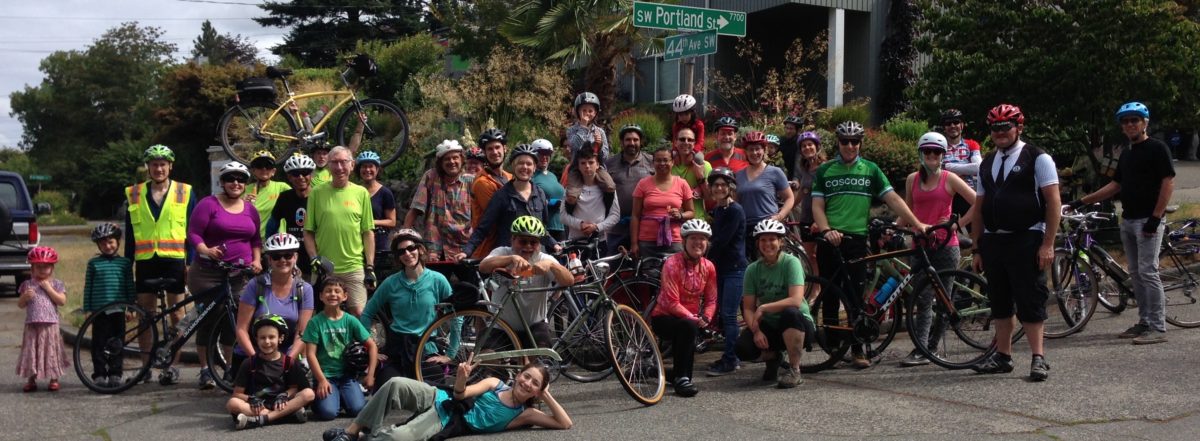Metro has been criticized about RapidRide, especially the C line from West Seattle. So why write about it on a “bike” blog?
Well…we just want to talk about general transportation that’s sustainable. We also feel getting around by bike is most efficient and enjoyable. So we’re going to do a comparison today.
(Jeff Hallman is the author of this post)
I left for the bus stop at 7:24am. Keep in mind this is a random Wednesday morning (April 17).

My closest bus stop is at California Ave & Findlay, just a few blocks for me. I love seeing the mountains in the morning!

I got to the bus stop at 7:29. The Orca card reader is nice, and makes loading passengers a little faster.

I must have gotten lucky because the bus arrived in about a minute, and I had a seat waiting for me. Nice!

The bus was standing-room only by the last stop in West Seattle, before getting on the bridge. The upper West Seattle Bridge had a lot of traffic, but nice that the bus has its own lane.
We slogged along toward downtown through tunnel construction, but I’m in no rush and have Wifi to make this post…a real-time update! We arrived at 3rd & Pike at 8:00am. Not bad, but biking would have taken me ~25 minutes to get here. It’s a little over 6 miles to get to 3rd & Pike, and I generally average ~15mph riding speed for a normal commute. This would take me ~1 hour to run (yes, I sometimes run-commute).

No major issues getting through downtown. The bus was about half full after the 3rd & Pike stop. I guess a lot of people either work downtown or are making transfers. Seems that cars avoid 3rd Ave where most buses travel.
My final destination was 15th & Newton in Interbay, just north of the Magnolia Bridge. Distance is right at 9 miles. The bus arrived at 8:16am, so it was ~50 total minutes for my commute by bus. I take the bus maybe once per week, and generally the RapidRide (for me) is 40-60+ minutes (ride time only) depending on traffic issues, so today was typical.

My bike ride takes 35-40 minutes (door-to-door), no matter what time of day or what traffic is like. Here’s a recent commute I did showing this (I log all my runs and rides using GPS):
[iframe height=’405′ width=’590′ src=’http://app.strava.com/activities/49032155/embed/6b5cb8dc367f94d642e71504da05d485eef2847d’]
Since it seems a lot of people commuting from West Seattle may work in downtown (based on my observations of how many people get off the bus there), I wonder if they realize it could be more enjoyable by bike. Notice I didn’t say faster, since most people aren’t as fast as me riding a bike. Sitting shoulder-to-shoulder (or standing) on the bus isn’t terribly enjoyable for me, but it is nice sometimes to relax, be warm & dry, and catch up on email, reading, news, etc.
This morning I got lucky and didn’t have to wait for the bus. But some days I wait 10-15+ minutes. And on the return trip I’ll sometimes wait nearly 30 minutes before a RapidRide bus comes along. On my bike I can hop on and go. Riding the bus becomes very inefficient once you factor in the time waiting for the bus.
I am lucky to have showers available to me at work. The time for showering after a bike ride cancels out the time showering at home before going to work and riding the bus. But in all cases, biking saves me time commuting versus taking the bus.
If you’re reading this and would like to commute by bike, please join us or contact us and we can help!








